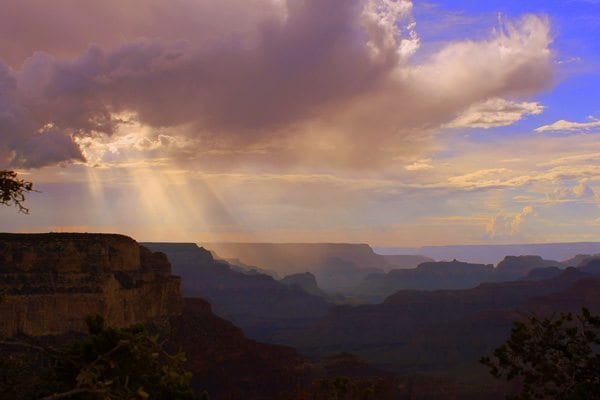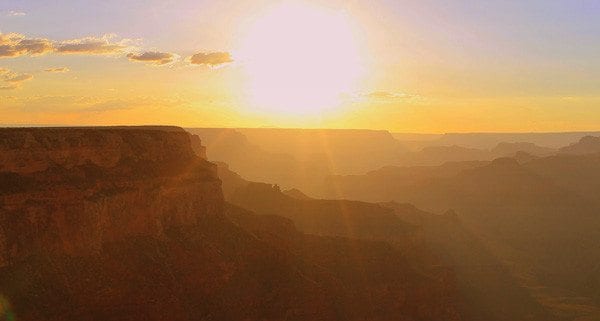Sunsets at Grand Canyon
One of the most popular Grand Canyon activities occurs every evening as the sun sets. There is an old saying that you have not seen fall unless you have seen the fall colors on the east coast. The same can be said about sunsets in the Grand Canyon…you have not seen a sunset unless you have seen a sunset at the Grand Canyon. Clarence Dutton, who surveyed the Grand Canyon for the USGS in 1882, once wrote, “At sunset the pageant closes amid splendors that seem more than earthly…the sun draws near the horizon, the great drama…begins.”
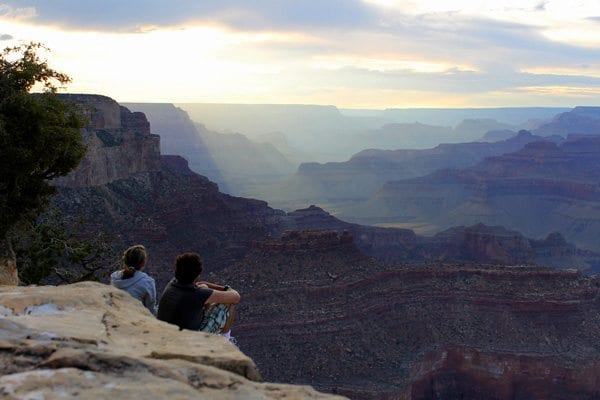
During the summer, thousands of visitors gather along the rim of the canyon and watch as the sun slowly sinks into the horizon. As the sun sets, the canyon walls become saturated in earthy hues. Towering buttes cast shadows into the canyon, giving the canyon texture and an air of mystery. Clouds add another dimension to sunsets. As the setting sun saturates the warm colors of canyon walls below, the clouds above the canyon provide a stunning contrast of deep purples, vibrant reds and soft pinks.
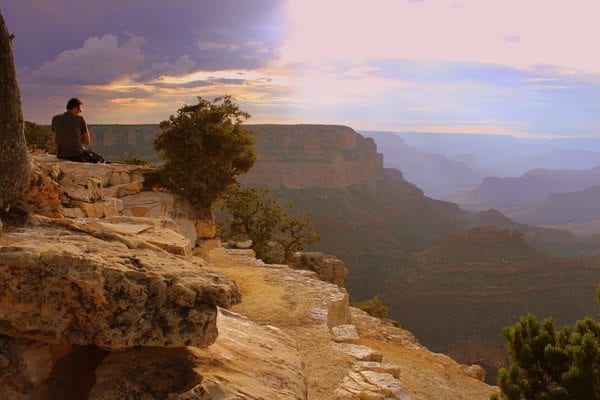
The quality of sunsets depends on the time of the day, season, clouds and air quality. Monsoon season runs between July and early September while winter storms are sometimes unpredictable. Too many clouds will prevent the sun from casting its magic on the canyon. Winds through the canyon can stir up dust and create a hazy view at sunset.
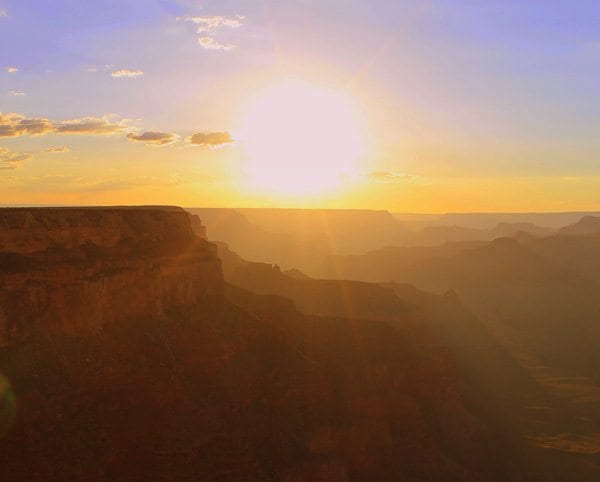
There is no one “best spot” for viewing the sunsets. It is suggested that visitors find a viewpoint that gives a clear view of the east and west. Visitors should plan on arriving at a viewpoint at least 1 hour before sunsets. For those heartier folks, sunrise over the canyon can be just as spectacular as sunsets. There are far fewer spectators of the rising sun allowing a more private showing of the canyons majesties. Arrive at least 30 minutes before the sun rises in the horizon and dress warmly.
